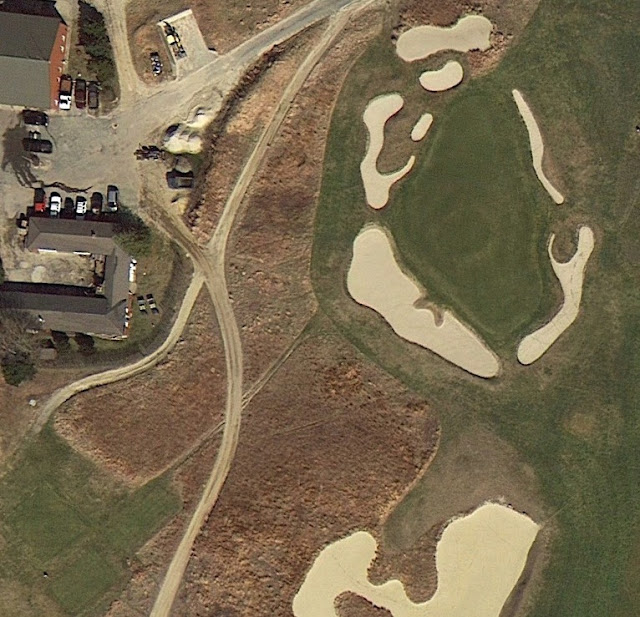During this week's telecast of the Masters, we will often hear the announcers speaking in hushed tones about the genius that is Augusta National. And without fail, the tournament drama will reach a crescendo during the back nine on Sunday when, as it has often been proclaimed, "the Masters really starts". Alister Mackenzie drafted plans for Augusta National in July of 1931, and designed the course in consultation with the legendary amateur golfer Bobby Jones. Later that year, the architectural duo decided to reverse the nines, a decision that would have robbed the future Masters tournament of much excitement had it been permanent.
 |
| 1931 revision of the original plans for Augusta National, note the reversal of nines. (Photo: golfclubatlas.com) |
Indeed, members played the course in this order for the first two seasons, as did the competitors during the first Masters contested in 1934. The Augusta National Golf Club is a winter retreat, and is not open during the hot Georgia summers. Therefore, with play confined to winters, the membership grew tired of frost delays which lifted much quicker on the back nine (current front) than the shadier 1st, 2nd and 3rd holes (current 10th, 11th and 12th). With the course now as Mackenzie originally designed, the stage was set for the scintillating drama of a back nine charge on Masters Sunday. In fact, the very next year, Gene Sarazen holed "the shot heard round the world" for a double-eagle 2 on the 15th hole en route to a final round 70 and an ensuing 36-hole playoff victory over Craig Wood.
It seems no lead is too safe heading into the back nine on Sunday. While trouble awaits tentative and misplayed strokes, great rewards lie in waiting for those that successfully execute an aggressive game plan. The sequencing of holes on the back nine plays an integral part in the great swings that play out in the final few hours of the tournament.
Consider player A having a multiple stroke lead on player B who is three holes ahead. The back nine begins with a notoriously difficult sequence. Holes No. 10, 11 and 12 historically rank as the 1st, 2nd and 3rd most difficult holes during the Masters. If player B can manage to get through these holes without giving up a shot to par, the drama starts to unfold. Just as player A tees off of No. 10 and begins the arduous three hole stretch of 10-11-12, player B is leaving Amen Corner at No. 13 tee and can take advantage of the historically easiest holes on the course, the two short par fives at No. 13 and 15. If player B can execute, these holes offer plenty of birdies and the occasional eagle, but with water lying tight to the green, dreams of wearing the Green Jacket can unravel. The dramatic two or three-shot swings start to occur more frequently here, when player A bogies 10 against a birdie or better by player B at 13 and may continue for the next two holes. Traditionally, Sunday hole locations on No. 14 and 16 provide more birdies then during the other rounds, due to the funnelling nature of the surrounding slopes that gather well executed shots to the hole. If player B racks up a number of birdies over the 13-14-15-16 stretch and player A falters slightly under the pressure at holes 10-11-12, the leaderboard tightens considerably. Psychologically, the comparatively easy stretch of 13-14-15-16 plays more difficult for player A if he has seen his lead evaporate or greatly reduced and might not play the holes as successfully as he has in the first three rounds. The back nine concludes just as it starts, albeit not quite as difficult, with two exacting par fours. If player B can handle the intense pressure and play level par over the final few holes and post a score, he puts added heat on player A who in our example is trying to recover lost strokes and regain the lead. If player A manages to maintain his lead heading into the final two holes, it takes sound play to finish in that coveted position.
The drama produced at the annual Masters tournament on Sunday afternoon is a product of the tremendous golf skills displayed by the Masters participants, whose precision and execution under intense pressure thrills the patrons and millions of fans watching on television. However, it is Alister Mackenzie's routing and hole design for the back nine at Augusta National that sets the stage for great drama to occur, providing architectural features and hole sequencing that can be exploited by talented professional golfers to produce the ultimate in sports theatre.































